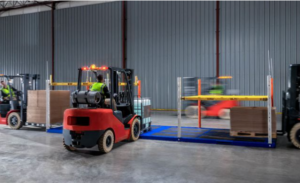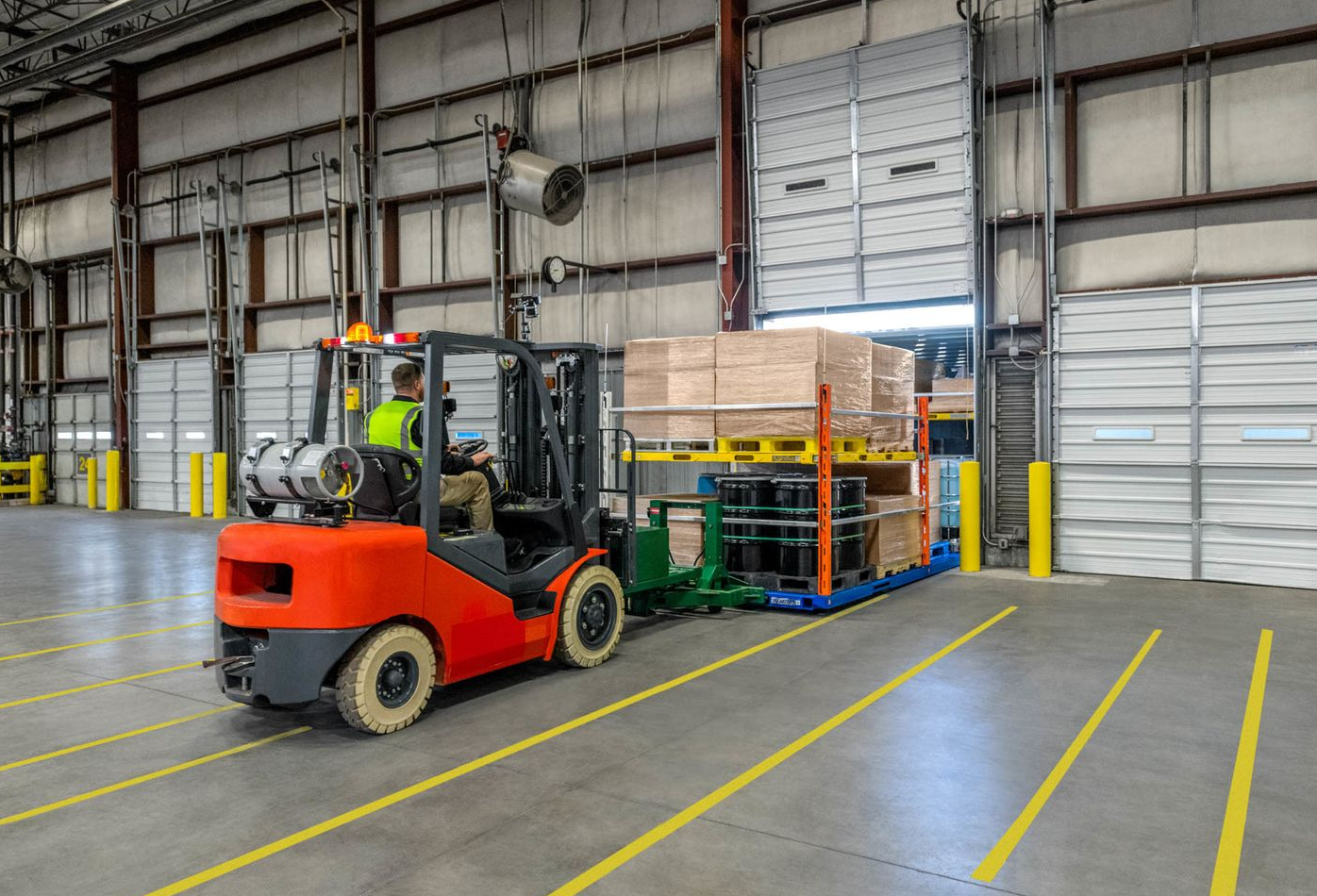ArcBest Rolls Out Technology to Speed Up Freight Loading
New freight-management system aims to ease bottlenecks at warehouses, reduce wait time for truckers
In an article posted by The Wall Street Journal, Liz Young writes about ArcBests new loading technology that could revolutionize the logistics industry:
“Trucking company ArcBest Corp. is expanding its logistics services with new technology allowing warehouse workers to load and unload truck trailers rapidly, addressing one of the biggest pain points for logistics operators.
The freight-management system, called Vaux, is a steel-and-aluminum racking system that sits underneath and around cargo inside trailer beds. Warehouse workers can latch a forklift onto the Vaux platform to push freight into a trailer or pull freight out in one move, instead of having to handle pallets individually.
ArcBest says loading or unloading a truck using Vaux takes less than five minutes, compared with the traditional process the company says can take 45 minutes. The technology has big implications for truckers, who frequently wait more than an hour for trailers to be unloaded before they can pick up or drop off freight.
“What our customers have been telling us is that they are really under pressure,” ArcBest Chief Executive Judy McReynolds said. “They want to deal with the bottlenecks and inefficiencies that are inside their distribution facilities. They also see a greater efficiency that could be gained from the trailer turns in their yards and eliminating yard congestion.”

ArcBest’s Vaux platform, pictured in Fort Smith, Ark.
Fort Smith, Ark.-based ArcBest provides truckload services as well as less-than-truckload options combining cargo from several shippers in a single trailer. The publicly traded company has been adding more logistics services to its offerings in recent years.
Vaux was designed to handle the challenges of loading and unloading LTL shipments, but it also benefits truckload shipments, Ms. McReynolds said. Using Vaux for LTL shipments, for example, cuts down on time spent unloading and reloading freight to retrieve products that might be deep inside a trailer, she said.
Vaux was designed to handle the challenges of loading and unloading LTL shipments, but it also benefits truckload shipments, Ms. McReynolds said. Using Vaux for LTL shipments, for example, cuts down on time spent unloading and reloading freight to retrieve products that might be deep inside a trailer, she said.
Vaux also has software for tracking items in transport, giving shippers visibility into the location of their freight. The racking system has a cellular service and Global Positioning System tracker. Bar codes on pallets are scanned as they are loaded so the software can trace the pallets using their location on the racking system.
Truck drivers frequently spend a significant amount of time, known as dwell time, waiting at warehouses to unload freight before moving on to their next stop. The average dwell time was 1 hour and 54 minutes per stop in 2021, according to the American Transportation Research Institute, a trucking industry group.
That time cuts into hours a trucker is legally allowed to drive daily, known as hours of service. Federal regulations limit most commercial truck drivers to 11 hours of driving over a 14-hour workday.
Reducing dwell is one of the biggest challenges logistics operators face, particularly with truckload shipments, said Chris Caplice, executive director of the Center for Transportation and Logistics at the Massachusetts Institute of Technology.
“That’s probably the biggest problem in truckload trucking because excessive dwell times mean the driver’s not getting paid, leads to higher driver turnover, just messes up the system because it causes a ripple effect,” he said. “If I’m late two, three hours in unloading, that means the next load is going to be two to three hours late, and you’re going to run into hours of service.”
Polaris Inc., which makes powersports equipment including snowmobiles, is one of the companies testing Vaux. In tests at a warehouse in South Dakota, Polaris has found the system allows for loading more freight per truck because racking can be arranged to fit various package sizes and shapes and to stack items. The system has also helped Polaris cut down on the amount of product that gets broken as it is moved on and off trucks.
“We ship a lot of glass windshields and doors and when you put that pallet in the back of a truck, every pallet that gets loaded bumps into that thing or gets shoved around,” said Paul Eickhoff, vice president of global parts, garments and accessories distribution at Medina, Minn.-based Polaris.
ArcBest reported record revenue last year of $5.3 billion, up from $4 billion in 2021. Rival trucking company TFI International Inc. recently disclosed it had taken a 4% stake in ArcBest, prompting speculation TFI is looking to buy ArcBest.”
Read the full article here.


 Jim Allen/FreightWaves
Jim Allen/FreightWaves